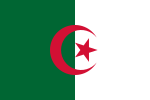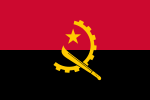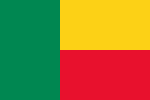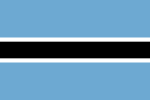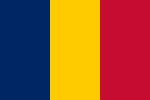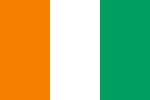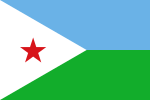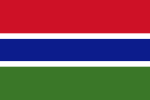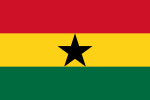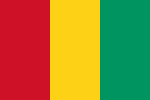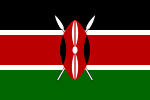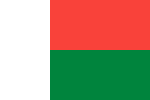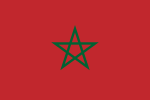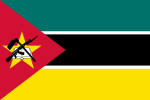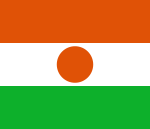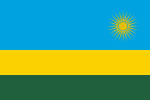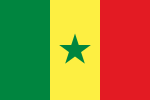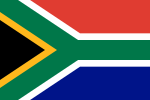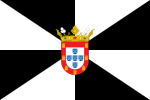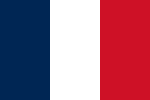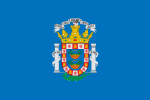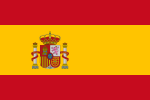
Africa’s film industry has become a global and cultural phenomenon that enjoys a huge following within and outside the continent.
The industry serves an audience that’s hungry for African stories of love, drama, intrigue, comedy, redemption, action and more. It’s no surprise that Africa’s film industry is currently the third largest in the world behind Hollywood and India’s “Bollywood”.
‘30 Days in Atlanta‘ is a Nigerian romantic comedy film that was released in late 2014. Africa releases hundreds of films every year but this one has totally changed the game. Just seven weeks after its release, ’30 Days in Atlanta’ grossed over$500,000! It’s the largest revenues ever made by a single African movie! This is great news for the continent and a sign of more high-grossing blockbusters to come!
Jason Njoku who lived in Manchester, UK, made use of the demands in the film industry in 2011. He founded iRoko TV – an idea that now turned into Africa’s most powerful online movie platform. Jason has since moved to Nigeria and today he is one of Africa’s youngest millionaires.
But it’s not just the Africa’s film industry that’s on the rise. African music has become hot cakes too! From Nigeria to South Africa, there’s a wave of raw and promising music talents that is sweeping across the continent. 2015 will surely be an interesting year for Africa’s entertainment industry – and there are opportunities for you!
2. Food & Agribusiness
The opportunities in Africa’s food and agribusiness space remain huge and will not go out of fashion anytime soon. With over one billion people to feed, Africa’s food and agribusiness market is a multi-billion dollar opportunity for entrepreneurs who know where to look.
Food production is still a huge and breathtaking opportunity. Grains, milk and all sorts of raw and semi-processed agro-products are still imported into Africa even though the continent has an enormous capacity to produce these. Entrepreneurs who can produce food products locally could reap very huge rewards.
The opportunities in food and agribusiness cover several different products across the value chain. In 2015, I expect that several African entrepreneurs will make a fortune in this industry. The possibilities are endless and largely unexplored.
3. Retail

Africa’s retail market is a multi-billion dollar business opportunity. In addition to its over 1 billion population, more Africans are buying stuff due to their growing economies, rising middle class and rapid urbanization.
Africa’s retail market is going through a monumental shift. Retail is gradually moving away from informal trading in open markets to organized retail in shopping malls and online stores. Africa’s homegrown supermarket chains like Shoprite, Game, Woolworths and Nakumatt are entering more countries and are spreading fast across the continent.
The growth in Africa’s online retail market is more breathtaking. Jumia, one of Africa’s fastest growing online retail businesses, is now worth more than $500 million, it only launched in 2012! With a presence in several African countries including Egypt, Cote D’Ivoire and Nigeria, Jumia is now regarded as the “Amazon of Africa.”
Despite the boom in online retail in Africa, this segment currently makes up less than 5 percent of the continent’s entire retail market. There’s still a lot of room in this space to serve the African market and a lot of money will be made in the process.
Seizing Africa’s Retail Opportunities is a detailed report that takes an interesting look at the opportunities in Africa’s retail industry. According to the report, Rwanda, Nigeria, Namibia, Tanzania, Gabon, Ghana, South Africa, Botswana, Mozambique, and Ethiopia currently provide the best retail opportunities in Africa.
4. Fashion & Beauty

Africa’s fashion and beauty market is developing at an impressive rate. The continent’s overwhelmingly young population provides a ready market for trendy fashion. All kinds of apparel, including locally made fabrics and imported designer labels have become hot-selling products across Africa’s rapidly expanding urban areas.
Africa has hundreds of rising stars who are building successful businesses in the fashion and beauty industry. I’ll share a few interesting examples with you.
Suzie Wokabi is one of Africa’s leading entrepreneurs breaking into the beauty and personal care market, a sector that is dominated by international giants like Unilever, Procter & Gamble, L’Oréal and Mary Kay. Suzie Beauty, the cosmetic business she started about 7 years ago in Kenya, has become hugely successful – a multi million Dollar business.
Kunmi Otitoju is another inspiring entrepreneur who has built a successful business with her luxury label, Minku. Her young business makes high-quality leather bags designed with Aso-oke fabric, a hand-loomed cloth woven by Nigeria’s Yoruba people. Her unique designs have become a major hit in high-end stores in Nigeria. (photo credit: minku.com)
The list of promising African entrepreneurs who are building successful businesses in the fashion industry is quite impressive. This would be an interesting industry to watch in 2015.
5. Real Estate

The demand for both residential and commercial real estate continues to grow across Africa. However, there is still a huge accommodation shortage. In countries like Nigeria, for example, over 16 million new houses need to be built to solve Nigeria’s serious housing problem. The estimated cost of providing these homes stands at a whopping $350 billion!
The opportunities in Africa’s real estate market include investing in land and real estate (properties) to take advantage of fast rising property prices. There is also lucrative potential in developing middle and low-income housing and office space for sale, lease or rent.
6. Internet & Tech
Africa’s Internet & Tech space will be a joy to watch in 2015. Tech hubs and incubators are springing up across the continent from Accra (Ghana) to Lagos (Nigeria), Jo’burg (South Africa) and Nairobi (Kenya). These hubs have become Africa’s “Silicon Valley” and continue to produce the best tech innovators and entrepreneurs Africa has ever seen.
Last year, the acquisition of Saya, a mobile messaging phone app developed by two young entrepreneurs from Ghana, made the headlines. This simple app for feature phones, which was created in 2011, started to replace SMS texting and became an instant hit in West Africa and even in faraway India!
Saya is just one of several success stories in Africa’s internet and tech industry. African entrepreneurs are using the internet and technology to solve problems and challenges on the continent. From taxi services to mobile payment systems and motorbike delivery services, African tech startups are buzzing with creativity and promise.
7. The Green Revolution

Around the world, the appetite for green and eco-friendly products and services is growing quite rapidly. Due to the threats of climate change, any solution that preserves the natural environment, reduces waste and pollution, and promotes reuse and recycling have become huge business opportunities.
Several African entrepreneurs and startups are already riding the wave of this opportunity and are becoming hugely successful.
In Ethiopia, Bethlehem Alemu’s Solerebels has become the world’s first truly eco-friendly footwear brand. This hugely successful business makes footwear from recycled waste material and sells its footwear products to customers in North America, Europe and as far as Japan. Again, another multi million Dollar company was born!
There’s also Thato Kgatlhanye (pictured), founder of Repurpose Schoolbags which makes eco-friendly bags from up-cycled plastic shopping bags. And there’s also Patrick Ngowi, the Tanzanian entrepreneur who has built a multi-million dollar business from solar power. Biogas production from organic waste is also another growing opportunity in Africa. (photo credit: africancelebs.com).
The Green Revolution will definitely be an interesting space to watch in 2015!
8. Building and Construction Supplies
Africa is going through a construction boom, an opportunity that will certainly create a lot of wealth for entrepreneurs on the continent.
It’s no surprise that Africa’s richest man, Aliko Dangote, is heavily invested in the cement business. Cement is one of the most important materials for building and construction work – houses, buildings, roads, bridges etc. Africa used to spend billions of dollars to import cement. But not anymore. Dangote and other cement producers like Lafarge are spreading fast across the continent.
Cement is just one example of several building and construction supplies that are growing in demand across Africa. The demand for steel is another multi-billion dollar business opportunity that’s probably bigger than cement. Timber (wood), roofing materials, glass, paints, plumbing and electrical supplies are other products that are enjoying a high demand due to the construction boom that’s happening across the continent.
9. Financial services

Like in other developing regions of the world, the banking, payment systems and overall financial services industry in Africa is one of the least developed in the world.
More than 50 percent of Africans still don’t have access to formal financial services and a huge number of transactions are still done in cash.
Africa presents a unique opportunity to make money in its financial services market. Entrepreneurs who can provide simple, easy and convenient solutions will be well rewarded.
One interesting startup to watch in this space in 2015 is Nigeria’s SimplePay. This platform, which provides payment solutions to online merchants in Nigeria has already attracted over $300,000 in investments and plans to raise up to $10 million this year. If all goes well, SimplePay could become the PayPal of Nigeria, and could make its young founder a millionaire! (photo credit: biztechafrica.com)
10. Investment
With slow economic growth in North America and Europe, more investment is pouring into fast emerging regions like Africa. In search for higher returns, more investors are now looking to invest in Africa. Whether you plan to funnel funds into Africa’s stock markets or invest directly in African startups, the potential for high reward has never looked better.
Towards the end of last year, a Nigerian billionaire investor, Tony Elumelu, committed to invest $100 million in African startups and entrepreneurs over the next 10 years. This is just one of several ambitious investment initiatives that will create tremendous opportunities and wealth for entrepreneurs who can exploit them.
One interesting trend I’ve noticed is the growing number of venture capital firms and startup funding platforms that are dedicated to the African investment market. More of these platforms will open shop in 2015. There’s never been a better time to invest in Africa’s future!
Source: http://africajumpstart.com/








